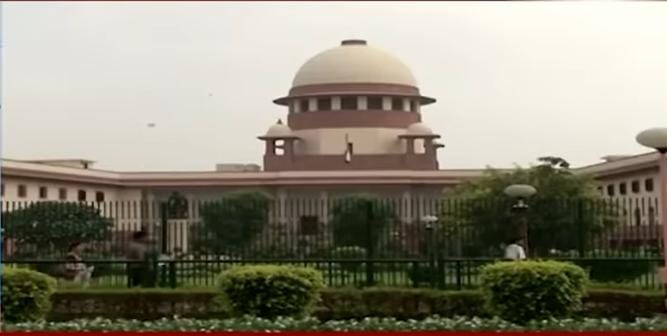Supreme Court’s Interim Waqf Order: A Halfway Step Between Justice and Deference
Did the Court Uphold the Principle That “Justice Must Not Only Be Done but Seen to Be Done”?
On September 15, 2025, the Supreme Court of India delivered its much-awaited interim order on the Waqf (Amendment) Act, 2025, halting some of its most contentious provisions while leaving others intact. The ruling, handed down by a Bench led by Chief Justice B.R. Gavai and Justice Augustine George Masih, has been read alternately as a reprieve for the petitioners and as a validation of Parliament’s authority. But the verdict raises a larger question: has the Court truly lived up to the age-old dictum that “justice must not only be done, but must also be seen to be done”?
This principle, articulated by Lord Hewart in R v Sussex Justices (1924), insists that judicial decisions must inspire public confidence by being transparent and fair not only in substance but also in appearance. Against this backdrop, the Court’s cautious order appears as much a balancing act as it is a statement on constitutional rights.
What the Court Stayed—and What It Did Not
The Court stopped short of staying the entire Act, instead suspending a handful of provisions that it deemed prima facie unconstitutional.
1.The Five-Year Faith Clause (Section 3(r))
The most glaring provision—requiring a person to be a practising Muslim for at least five years before creating a waqf—was stayed. The Bench found the clause arbitrary, noting that no mechanism exists to test the authenticity of one’s faith. Allowing state officials to verify religious practice would intrude upon personal conscience, thereby breaching Article 25 of the Constitution.
2. Executive Encroachment into Property Rights (Section 3C)
The Court restrained the powers of Collectors to alter revenue records or derecognise waqf property without tribunal or judicial oversight. By doing so, the Court preserved the separation of powers and offered temporary protection to mosques, graveyards, and madrassas vulnerable to dispossession.
3. Representation on Waqf Councils and Boards
The order capped non-Muslim members at four in the Central Waqf Council (out of 22) and three in State Waqf Boards (out of 11). While this curbed the government’s attempt to tilt the composition of these bodies, the Court did not eliminate the possibility of non-Muslim participation altogether.
4. Chief Executive Officers of Waqf Boards
The Court declined to bar non-Muslims from serving as CEOs of Waqf Boards but recommended that, “as far as possible,” Muslims be appointed to these posts. The phrasing, however, leaves wide scope for executive discretion.
On the other hand, several controversial provisions were left untouched:
•The abolition of waqf by user, which historically recognised religious endowments based on continuous public use.
•The bar on treating ASI-protected monuments or tribal lands as waqf property.
•The mandatory registration of waqf properties, which petitioners had argued was impractical given the short timelines and incomplete archival records.
In effect, the Court’s interim order protects against the most egregious forms of executive overreach while allowing the government’s reformist framework to remain in place.
A Limited Relief for Petitioners
For Muslim organisations, the order is both a relief and a disappointment. On one hand, it neutralises the draconian five-year faith requirement and prevents arbitrary dispossession of property by Collectors. On the other, it leaves intact provisions that could still erode the community’s autonomy over its religious endowments.
The continued abolition of waqf by user strikes particularly hard. Many shrines, mosques, and graveyards that lack historical revenue records—often due to colonial-era surveys or wartime destruction—now face the risk of losing their waqf status. Communities that have preserved such sites for centuries find themselves at the mercy of outdated documentation, rather than living tradition.
The limited cap on non-Muslim members in waqf bodies offers some reassurance but fails to address the larger constitutional question: why are Muslim endowments subjected to “secularisation” when Hindu and Sikh religious boards retain strict denominational control?
Thus, while the petitioners may claim a tactical victory, the battle is far from over.
Does the Interim Order Pass the “Seen to Be Done” Test?
Lord Hewart’s dictum—justice must not only be done but must be seen to be done—provides a useful lens to evaluate this ruling.
On the one hand, the Court’s stay on arbitrary provisions demonstrates judicial vigilance. By striking at clauses that blurred the line between civil regulation and religious policing, the Bench reassured minorities that their faith practices will not be adjudicated by bureaucrats.
Yet, the Court’s reluctance to confront deeper asymmetries undermines the appearance of justice. Its silence on the broader secularisation of waqf governance—especially when Hindu, Sikh, and Christian institutions enjoy greater self-governance—creates the impression of unequal constitutional treatment. By not halting the abolition of waqf by user, the Court risks being perceived as acquiescing to silent dispossession.
Seen through this lens, justice has been partially done—but not convincingly seen to be done.
Political Context Cannot Be Ignored
The ruling must also be situated within the political environment in which the amendments were passed. The Waqf (Amendment) Act, rebranded as the “Unified Waqf Management, Empowerment, Efficiency and Development Act,” was rushed through Parliament in April 2025 with limited debate. Its framing by Union ministers as a “transparency and reform” measure was received by Muslim organisations as yet another targeted intervention—akin to the criminalisation of triple talaq and the push for a Uniform Civil Code.
The interim order allows both sides to claim victory. The government can argue that the law remains largely intact, while petitioners can point to the striking down of the most extreme clauses. This political balancing act reflects the Court’s own delicate posture: cautious not to overturn Parliament’s will entirely, but compelled to act against overreach.
The Road to a Constitution Bench?
Given the magnitude of issues at stake—Articles 25 and 26 (freedom of religion), Article 30 (minority rights), and the federal distribution of powers—the case seems destined for a larger Constitution Bench. Should either side challenge the final order, the Supreme Court may well constitute a five- or seven-judge bench to give authoritative clarity.
The question is not merely administrative. It cuts to the heart of Indian secularism: can the state regulate religious endowments for accountability without undermining minority autonomy?
Beyond the Courtroom: Implications for Secularism
The interim ruling underscores a paradox in India’s secular framework.
A genuinely secular state regulates religious endowments only to ensure accountability and transparency.
It does not reshape them in ways that disproportionately affect one community while leaving others untouched.
By allowing wide executive influence in waqf governance, while simultaneously preserving denominational autonomy for majority institutions, the state risks reducing secularism to a one-way street: minorities must accept oversight, while majority communities retain self-rule.
The Court’s interim order, by not addressing this asymmetry head-on, leaves this paradox unresolved.
A Pause, Not a Resolution
The Supreme Court’s September 15 order is less a judgment than a holding pattern. It provides breathing space for petitioners, reins in the most overreaching provisions, and leaves the government’s reformist project largely intact.
But in its caution, the Court may have sacrificed the appearance of complete fairness. For many, the order reads less like a constitutional safeguard and more like a compromise designed to keep both sides quiet.
The final verdict, whether by the present Bench or a future Constitution Bench, will determine not only the fate of India’s waqf properties but also the credibility of the constitutional promise that justice must be done—and must be seen to be done.
Hasnain Naqvi is a former member of the history faculty at St. Xavier’s College, Mumbai



